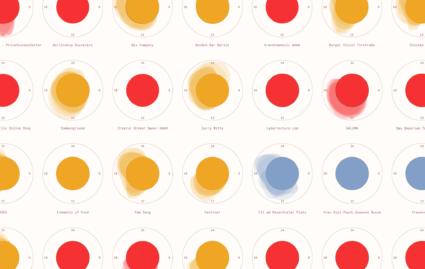VIDAN Visual and dynamic arrangements of narratives
At the intersection of data visualization, digital storytelling, and urban infrastructure, VIDAN ("Visual and Dynamic Arrangements of Narratives - Visuelle und dynamische Arrangements von Nachrichten") was an interdisciplinary research project devoted to the design, development and evaluation of data-based article formats. It aimed to create novel interaction and visualization techniques for the visual explanation and interactive exploration of complex data.
The structure of news articles has hardly changed with the spread of online media. While some newsrooms have started to invest into the creation of long-reads and so-called scrollytelling pieces, the bulk of articles online is relatively conventional. Though social media are playing an increasing role in the distribution, news articles remain mostly static, linear and isolated. The content of articles usually remains fixed and makes no reference to the current temporal and spatial situation of the reader. To develop and evaluate innovative techniques of visualizing news articles and narratives, the VIDAN research project experiments with new formats of article preparation and presentation. In close cooperation with domain experts and analysts and within the framework of user-centered design, concepts of data-based storytelling are investigated, developed in the form of functional prototypes, and evaluated with authors and readers. We will use the city as a framework to investigate how data-based narratives are changing our ways to analyze and communicate complex issues and their consequences.
Cities are complex organisms, different stakeholders and entities shape its form and rhythm. As humans and citizens we experience the city everyday by navigating its complexity and moving through it. In the last few years, our cities have become more and more intertwined with technologies that help us navigate this complexity and services that enrich our city experience. Those technologies are also generating a great amount of data and information that can be used to investigate the city further. Over the course of three years, the sectors mobility, water and waste will be covered as integral parts of urban infrastructure. Together with civity, a German consultancy company specialized in the public sector, we will use data-based narratives to open a discussion on the changing face of the city.
VIDAN is a research project funded by the Federal Ministry of Education and Research (Bundesministerium für Bildung und Forschung) and a cooperation with civity Consulting Group.


